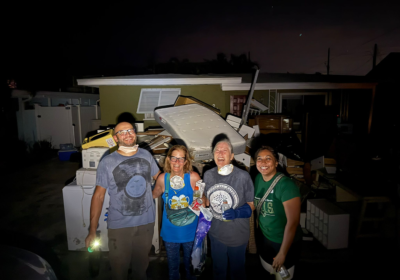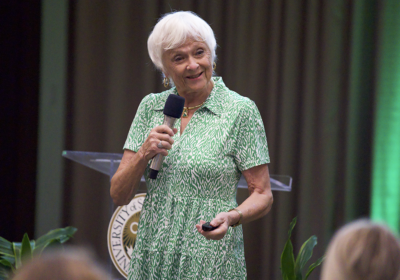First solar eclipse visible in 80 years

Over the course of the solar eclipse, Florida is not part of the path of totality. SPECIAL TO THE ORACLE
As an event that only happens once in the average lifetime — and may never happen to the same extent again — today’s solar eclipse is expected to draw crowds across the country.
While Florida isn’t part of the path of totality, which means students won’t get a perfect view of the total eclipse, the event is still rare enough to draw attention.
“The only other thing that’s coming into my head (that’s comparably rare) is other astronomical events, which are very very rare,” Kevin MacKay, astronomy professor, said. “For instance, something in the solar system blocking out something else in outer space is a really really rare event.
“For example, the planet Uranus has rings around it but you can’t see those rings. We didn’t know they existed until that planet went in front of a star. That’s a pretty rare event.”
Solar eclipses on Earth are unique compared to those on other planets. The Earth’s moon, according to MacKay, is 400 times smaller than the sun, but it also happens to be 400 times closer than the sun. This can make the two appear to be the same size and have the moon block the sun’s light.
“If you take the way the Earth orbits around the sun … the moon’s orbit around the Earth is not in the same path,” MacKay said. “It’s inclined by about five degrees. For the most part, every month, from our perspective, the moon either goes underneath the moon in the sky or above the sun in the sky.
“If the path of the moon around the Earth was in the same plane, we’d get an eclipse every month and it would probably be pretty boring.”
According to MacKay, it can happen somewhere on the planet roughly once every six months but for a specific location it can take hundreds of years for an eclipse to happen again. Today’s eclipse has been a topic of discussion for the past 80 years.
Cosmic events work on a cycle and are therefore predictable, according to MacKay, and have been tracked back to antiquity times. For example, in India there are rock drawings of serpents attacking the sun. According to MacKay, written records of eclipses go back to Babylonian records discovered by Greek astronomer Hipparchus.
“In the Babylonian records, there’s another record six years later of another eclipse and he (Hipparchus) was able to predict, in his day, that there was going to be another one in six years time and it actually happened that way,” MacKay said.
Future eclipses, however, won’t be as good, according to MacKay, because the moon is gradually moving away from the Earth.
“It’s moving at a very small rate. It moves at about three centimeters a year. So as the moon is gradually moving farther and farther away from the Earth its getting smaller and smaller. So the eclipses in the future won’t be as easy to come by.”
The eclipse is expected to reach its peak in Florida at around 2:50 p.m. today. MacKay, along with members of the astronomy club, will be outside of the Marshall Student Center and the Crescent Hill parking garage with telescopes, filters and special glasses that students can use to view the eclipse. Additionally, Students with Disabilities Services will have viewing glasses as well.
“Enjoy the eclipse, but be very careful,” he said.






